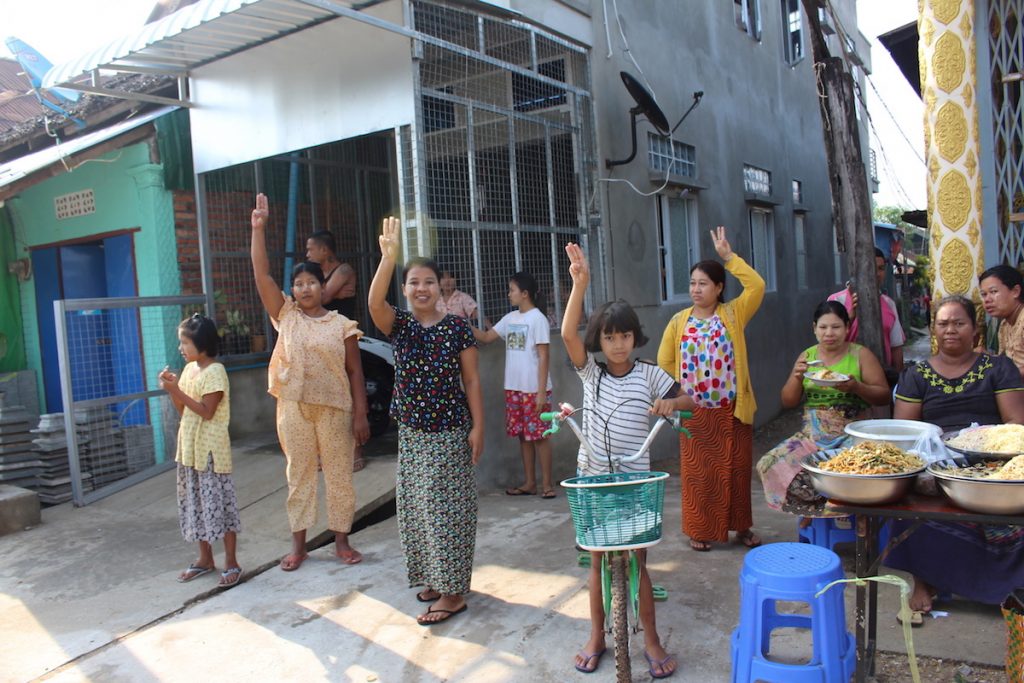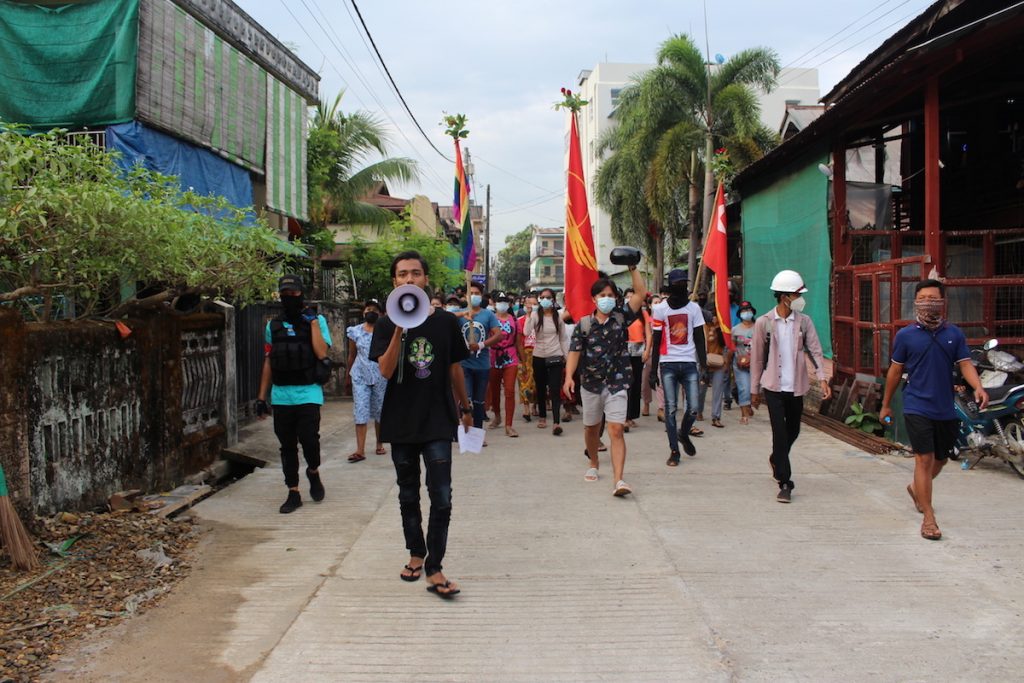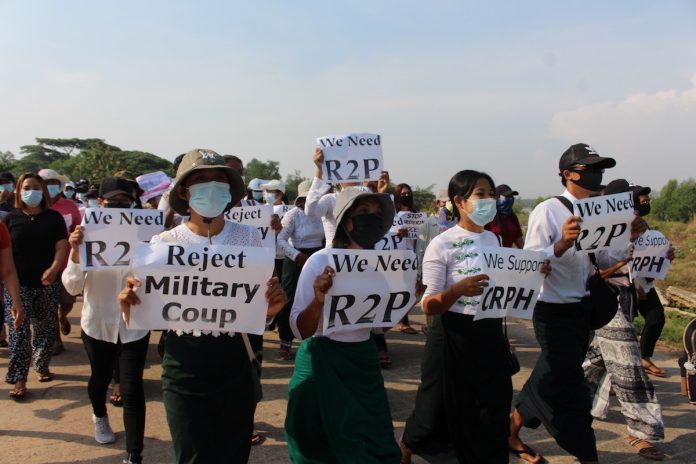Opponents of Myanmar’s military junta sprayed red paint on roads in the country’s biggest city on April 6 to mark the deaths of hundreds of “martyrs” killed by troops, as the crisis dragged on with no clear diplomatic solution in sight.
Some 570 people have been killed during nearly two months of unrest since the military coup on Feb. 1, and security forces have arrested close to 3,500 people, with about four-fifths of them still in detention, advocacy group the Association for Political Prisoners (AAPP) said on April 6.
Demonstrators woke early in Yangon to spray and splash pavements, roads and bus shelters with red paint in protest at a sweeping crackdown by security forces that has caused weeks of international outrage.
“The blood has not dried,” said one message in red.
Another daubed across a bus shelter took aim at rank-and-file soldiers who it said were being exploited by kleptocratic generals.
“Don’t kill people just for a small salary as low as the cost of dog food,” it said.
Anger has swept Myanmar in the past two months over the return of a military government and an abrupt end to a brief era of democratic and economic reform and international integration that was absent under the military’s oppressive 1962-2011 rule.
Some protesters have called their movement a “spring revolution”, characterized by street marches, quirky acts of non-violent rebellion and civil disobedience campaigns aimed at crippling the government apparatus.
Note: Embedded tweet above was not in Reuters’ original report, but added by LiCAS.news
Internet blackouts
Their ability to organize may have been hampered in recent days by the military’s halt of broadband wireless internet, adding to a weeks-long block of mobile data services which had been the main channel for spreading word of what was happening in the country during the crackdown.
Those able to access social media, including some journalists, on April 6 shared pictures of striking workers marching for a second day in the city of Mandalay, some wearing gas masks and giving the three-finger salute that has become a symbol of resistance to army rule.
A day earlier, demonstrators held placards of detained leader Aung San Suu Kyi and signs calling for international intervention.

Authorities have issued arrest warrants for dozens of celebrities, models and influencers, and on April 6 a popular comedian was arrested in Yangon, the Mizzima news site reported.
Sithu Aung Myint, a prominent journalist, was on the wanted list. Writing on Facebook, he said he was proud to be considered a threat.
“When the coup council who have been committing crimes announces you as a lawbreaker together with the whole country, you will be more than happy because you are recognised as a hero in this revolution,” he wrote.
“Your next generation will be proud of you.”
Protesters and workers have come out daily against the military takeover, which followed several years of awkward power-sharing between generals and Suu Kyi’s civilian government under a democratic system created by the army.
Suu Kyi’s party won an election by landslide in November, and had pledged to change the constitution to reduce the military’s political clout.
Despite the election commission saying the vote was fair, the military justified its coup by alleging that the ballot was fraudulent, and has promised to hold a new election at an unspecified time.

Diplomatic effort
On April 5, the military’s mouthpiece newspaper, the Global New Light of Myanmar, carried a banner quoting the junta’s leader, Senior General Min Aung Hlaing.
“Democracy is based on the wish of the majority, but such a wish must be authentic with honest politics,” it said.
Min Aung Hlaing has sought to play down the unrest and dismissed international concern as misplaced, calling it an internal issue that the military was handling with “utmost restraint”.
Western countries have called for a restoration of Suu Kyi’s government, a position echoed by only a handful of Myanmar’s regional neighbors.
Brunei, the chair of the 10-member Association of Southeast Asian Nations (ASEAN) on April 5 agreed to a meeting of its leaders over the crisis in Myanmar, though no date was set,
ASEAN operates by consensus but the divergent views of its 10 members on how to respond to the army’s use of lethal force against civilians and the group’s policy of non-interference has limited its ability to act.









